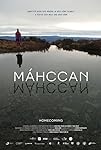Eye For Film >> Movies >> Homecoming (2023) Film Review
Homecoming
Reviewed by: Jennie Kermode

Around the world, there is an increasing number of conversations around the return of cultural artefacts from colonial countries’ museums to members of the cultures they belong to. It’s an unbalanced debate because those cultures are, as a rule, still suffering from the wider damage caused by colonialism, and don’t have much of a voice in wider public conversations, so most people don’t really understand their arguments. Those arguments differ, of course, in every instance, but in exploring one specific case, Suvi West and Anssi Kömi’s documentary, which screened as part of the 2023 Toronto Internatonal Film Festival, offers viewers a fresh perspective which will help them to make sense of others.
This case deals with Sámi artefacts in the Museum of European Culture in Berlin. Many of them have not even been on display and, where they were, they were often incorrectly labelled. West and Kömi are Sámi themselves and participating directly in the group of people examining the items ahead of their transfer into the custody of a Sámi museum. The process is amicable, with support from Finnish curators who seem interested in the opportunity to learn, but they are not prominent here. The focus in on those engaged in recovering their history and reconnecting with what has been stolen, on both a literal and a metaphorical level.

Parts of the film take place in back rooms where recovered items are examined. “It’s too bad the curators were only interested in the items and not the stories,” one man remarks. Some of those stories have been lost forever; others might yet be recovered if the origins of particular items can be identified so that they can make their way home. A fair bit of detective work has to be done. The crosses on a pair of boots suggests that they make have been made by Skolt Sámi people, and it is determined that the reindeer from whose hide they were made died early in the season. The group notes that a hat made with bear fur conveys the idea that the woman who wears it has the strength of a bear. Knowledge like this has been passed down even in the face of severe repression.
The day to day practice of that repression is not addressed in detail here, but egregious examples of it emerge as the film unfolds. At one point West examines photographs of Sámi people exhibited in a zoo in the 1890s, alongside reindeer, forced to engage in a bizarre parody of their traditional lives in front of gawping spectators. Later, she visits an area where hollows in the ground are all that remain of Sámi graves. These were dug up, it is explained, so that the skulls of their inhabitants could be taken to a university for research purposes – that is, so that racist scientists could compare them with other skulls in an effort to ‘prove’ the Sámi less than human.
We also see the effects of racist practices on people – even a Sámi researcher who recalls just accepting things which she now feels she ought to have been furious about. There is discussion of the pressure to be ‘authentic’ - a older Sámi man remembers researchers losing interest in him after they realised that he was wearing a Bart Simpson t-shirt underneath his traditional garb – and of the idea that modernisation isn’t part of certain peoples’ rights, that they are ‘nature people’ and should stay that way.
Parts of the film are intensely personal. West reflects on the difference between connecting with ancestors in the generic sense and connecting with one’s own ancestors, as she had hoped to do. Great sensitivity is shown in the approach to witch drums, which have important spiritual significance and are not supposed to be seen by outsiders. These have, we are told, been stolen since the 1600s, marking the beginning of efforts to destroy Sámi culture. They also carry emotional weight because each one was taken from someone who was killed for their faith, and because their markings contain numerous stories which, in the right hands, can help to restore lost histories.
Different chapters of the film are linked by stunning landscape shots in which the land appears mirrored at the top of the screen, with just a ribbon of sky between. They seem to speak to both a love of these ancestral lands and a feeling of enclosure, of the need to press on and emerge into some more spacious future. The journey which the film presents is one gull of hope and possibility, yet it is also redolent with grief at what the Sámi people have experienced, and at many difficult personal experiences, some of them unspoken yet visible in people’s eyes.
This is a quiet and thoughtful film with slowly building power. It will leave you awed by the resilience of its subjects yet angry that they needed it. Importantly, however, It finishes on a positive note, showing us what it means to people to have their artefacts restored and reconnected with their stories once again. It does not allow the Sámi to be written off as tragic figures, but shows them regaining their power through warmth and humour and joy.
Reviewed on: 09 Sep 2023
















